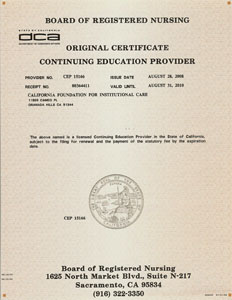California Board of Registered Nursing Investigation
The Independent Investigations Group investigates pseudoscience; particularly therapeutic touch in professional nursing. Just how well regulated is nursing in California?
The California Board of Registered Nursing (CBRN) oversees and licenses more than 350,000 registered nurses in the Golden State.1 Nurses in California must complete thirty hours of continuing education units (CEUs) every two years to remain licensed. These units must be issued by certified CEU providers and "must be relevant to the practice of nursing."2 The courses may, however, be related to topics as varied as "social and behavioral sciences . . . therapeutic interpersonal relationship skills. . .and nursing administration."3
There is no ongoing reporting mechanism to keep track of each individual’s CEUs. Nurses comply based on the honor system but are expected to submit proof of coursework if requested. Correspondence courses can qualify for credit, and the board requires little substantiation that anything has been learned.4
A Tectonic-sized Crack in the System
The Independent Investigations Group (IIG) at the Center for Inquiry/Los Angeles has been an active skeptics group since January 2000. When we at the IIG learned that a nursing CEU provider called Clearsight was offering credits for a class in "energetic medicine," we investigated. "Energetic medicine" is Clearsight’s name for therapeutic touch (TT), the manipulation of alleged energy fields such as chakras and auras over the body. (The practitioner’s hands make no actual contact with the patient.) Clearsight advertised that they were licensed by the state of California to teach the following to registered nurses:
The skills of "seeing energy" to see and diagnose body organs; to scan the physical and energetic bodies for disharmonies or illness; and to heal the aura and chakras, the energetic systems of the body.
Clearsight introduces you to the skills of Free Will, the art of energy diagnosis, how to make Separations from your Healee so you do not take another person’s energy or disease home and how to release old patterns and stuck energy in your body and auric field. When you use Clearsight healing skills you clear and clean the entire energy field (chakras, channels and aura) and grow and evolve evenly at the rate of growth you are ready to access.5
Our shock at discovering that such a pseudoscientific course had been sanctioned by an ostensibly scientific government agency led us to inquire about Clearsight’s application. Had Clearsight defrauded the CBRN in order to cash in on the CEU market?
Sacramento, We Have a Problem
After some prodding to remind the CBRN that Clearsight’s provider application was public record, the IIG received a copy of the application and discovered that it was blank in some places and that the instructor’s educational credentials consisted of a BA in comparative religion and a ministerial certificate from the Church of Divine Man a psychic institute that offers healings, psychic readings, and other such activities.6 The application also made the unsubstantiated claim that "medical science has recognized and quantified the existence of a human energy field which, when blocked, may result in a broad range of physical and psychological ailments."7
From January to May 2006, IIG investigators had a frustrating series of exchanges with the nursing board. Initially, we asked that they withdraw Clearsight’s certification to teach energetic medicine based on the omissions in the application and the lack of supporting medical value for the practices being taught. We naively thought that after we pointed out these (what we thought were stunning) revelations, the board would recognize their oversight and withdraw Clearsight’s certification to teach New Age malarkey. We had no idea our odyssey was just beginning.
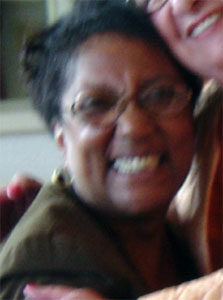
Former CBRN Executive Ruth Ann Terry
In a February 2006 letter, then CBRN Executive Officer Ruth Ann Terry wrote to IIG investigator Owen Hammer that "nurses . . . need to be informed about these techniques in order to understand the patient’s/client’s perspective and learn what is involved in each technique."8
IIG Chair James Underdown addressed the board personally in May and June of 2006 and argued that Clearsight’s course was not a class about energetic healing; it was a course teaching (i.e., endorsing) energetic healing, an unscientific concept. The IIG submitted a proposed rewrite of the current rules that would help prevent future lapses in science standards.
The current rules say (in effect) that content must be relevant to the practice of nursing, related to scientific knowledge, or related to client care.9 Our proposed change was that content must be relevant, scientific, and related to client care. We also submitted a clause clarifying the definition of scientific and a change providing for automatic withdrawal of certification from CEU providers who give false information on an application.
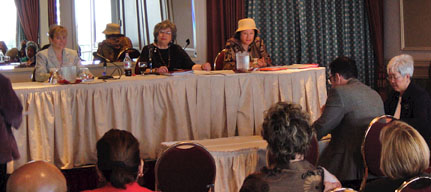
The IIG then contacted the California Department of Consumer Affairs, which oversees nursing regulations, and received a reply in July 2006 that defended the granting of Clearsight’s certification. In August 2006, Underdown addressed the board’s Education/Licensing Committee in Sacramento. There, the IIG was informed10 that the board will "award a CE Provider number to the applicant if the alternative or complementary medicine modality is discussed in the publication Best Practices in Alternative and Complementary Medicine.11
Best Practices, which would be key to our investigation, is a hard-to-find publication that is regarded by the board as its guidepost to educational policy. It contains sections on TT, magnet therapy, Reiki, aromatherapy, homeopathy, and qigong. The material on these topics is highly credulous12 despite poor scientific support and wide criticism in the Skeptical Inquirer and other journals. The board nevertheless defended the licensure of energetic medicine classes and other alternative medical practices by citing Best Practices as an acceptable standard.
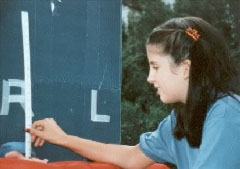
Emily Rosa was the youngest person,
at 11, to have a paper published
in a scientific journal.
After an exhaustive search, we found Best Practices in a library and carefully read the sections that dealt with TT. We then crafted a comprehensive, well-documented refutation of Best Practices’ TT claims and sent copies of this refutation to each board member. This was in addition to literature we had already given the board, including material from Robert Park’s SI piece "Alternative Medicine and the Laws of Physics"13; "A Close Look at Therapeutic Touch"14 by Linda Rosa, Emily Rosa, Larry Sarner, and Stephen Barrett (in The Journal of the American Medical Association and Kevin Courcey’s "Further Notes on Therapeutic Touch," which is available online at www.Quackwatch.org.
Oddly enough, Rosa et al’s JAMA paper was cited in the Best Practices literature despite the fact that it elegantly refutes claims that TT works!
The board promised to consider our suggested changes to the regulations,
but we never heard from them or saw any sign that the item was listed on any
subsequent board agenda or addressed at any meeting. We were stonewalled.
You Want Crazy? You Got It!
We then decided to see for ourselves just how lax California’s CEU provider application process really is. We created a CEU provider called the California Foundation for Institutional Care or CFI-Care and sent an application with the $200 fee to the CBRN. We called our course "Feng Shui for Home Care Providers" and listed IIG investigator Karen Kensek as the instructor because she teaches architecture at the University of Southern California and thus meets the qualifications of a certified instructor. But we didn’t stop there.
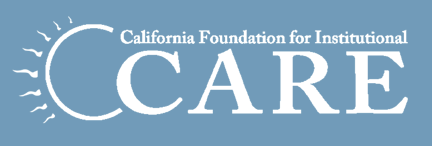
The following sections appear on our application for this course aimed at professional nurses:
- Möbel Kinesiology (Möbel is the German word for furniture, so möbel kinesiology is, essentially, furniture moving.)
- Feng Shui (a practice in which a structure or site is chosen or configured so as to harmonize with its qi, or life energy)
- Chinese ShŽyu (translation: snake oil)
- Vapor and Reflective Surfaces (another way to say smoke and mirrors)
- Apophenia (the experience of seeing patterns or connections in random or meaningless data)
- Anthropomancy (divination through human entrails)
- Canupiary Flexibility (The word canupiary exists in no language we could find. We made it up.)
When the unfamiliar content on our application was initially questioned, we simply pointed out that the sections we proposed were consistent with material found in Best Practices, the board’s own gold standard for educational content. They would either have to certify CFI-Care or reject Best Practices.
CFI-Care was certified as Continuing Education Provider #15166 on August 28, 2008. We were officially in the for-profit business of teaching wacky ideas to professional nurses.
Feng Shui for Nurses: The Class
After much discussion about how to use our newfound state-sanctioned authority to disseminate false information, we decided to teach the class as-applied-for at the Center for Inquiry/Los Angeles. Part of the class would include revealing our motives to embarrass the CBRN into recognizing the flaws in its continuing education system. We certainly wouldn’t want to see a class like "Feng Shui for Home Care Providers" taught for real.
In late March 2009, we issued press releases announcing that we would be teaching this state-approved class for the first time. We invited nurses, the press, and any other concerned citizens interested in the state’s healthcare status. We even offered nurses free entry, free coffee, and two hours of CEU credit for attending.
But the board had one more roadblock to throw in front of us. Days after publicizing the class to the world, we received a letter (dated March 27, 2009) from CBRN Executive Officer Ruth Ann Terry stating that our certification had been "issued in error" and was now rescinded. We found it interesting that it took the CBRN eight months to discover this (as yet unnamed) error and only after our extensive publicity campaign spotlighting the folly of their approval.
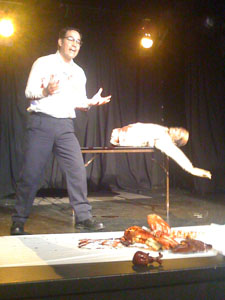
Jim Underdown teaches Anthropomancy
We taught the class anyway, with no promise of CEUs, to an amazed and incredulous crowd. The handful of nurses who attended the class with around seventy-five others were appalled that the class’s ludicrous content had been approved by the board. Jim Underdown reaching into an anatomically correct rubber corpse and flinging an armful of bloody latex entrails onto the stage to read the future was particularly memorable.
As of late July 2009, our inquiries into the reason for the revocation have been ignored.
Arnold Terminates the Board
On July 13, 2009, Governor Schwarzenegger replaced six of the seven appointed members of the CBRN.15 The following day, CBRN Executive Officer Ruth Ann Terry resigned. It seems that while the board was taking its time responding to our objections over the teaching of pseudoscience, it was also taking its time (an average of three to five years, according to the nonprofit news organization ProPublica) investigating and closing complaints against nurses. The Los Angeles Times and ProPublica reported last fall that nurses with serious or multiple criminal convictions kept their licenses for years before the board acted against them.
We should note that the former board was not unanimously against our efforts and that the IIG is not taking sides regarding the replacement of the California Board of Registered Nursing. We are hopeful that the new board will take this opportunity to reexamine its continuing education polices. We will petition them to support high scientific standards in the care of California residents. Nurses and patients both deserve the best information scientific medicine can provide.
Presentation of CBRN Investigation by Brian Hart at the 2010 TAM8 Conference in Las Vegas:
Part 1
Part 2
Acknowledgements
The authors would like to acknowledge the invaluable help and dedication of the rest of the IIG with special thanks to Karen Kensek, Jim Newman, Jerry Buchanan, Wendy Hughes, and Bernie Eisenberg. They would also like to thank Linda Rosa, RN, and Wally Sampson, MD, for their advice and guidance throughout this investigation.
Notes
- http://www.rn.ca.gov/about_us/whatisbrn.shtml.
- California Code of Regulations, Title 16, Division 14, Article 5, Section 1456.
- Ibid.
- CME Resource Catalogue 2009.
- www.clearsightaura.com/index.php?topic=engmed (accessed July 20, 2009).
- See their Web site at http://www.c-d-m.org/.
- Clearsight application for certification as a provider of continuing education units in the State of California, 1994. Page 1.
- Letter to IIG investigator Owen Hammer from CBRN Executive Director Ruth Ann Terry, February 2, 2006.
- Paraphrasing of "Nursing Practice Act with Rules and Regulations," section 1456.
- Language copied from the official minutes for the California Board of Registered Nursing Education/Licensing Committee meeting on August 31, 2006.
- Formally, Best Practices in Complementary and Alternative Medicine: An Evidence-Based Approach with Nursing CE/CME by Lynda W. Freeman. Aspen Publishers 2001.
- The studies cited had no control group, were not blinded, were never replicated, were conducted in secret, or actually disproved the efficacy of TT.
- Skeptical Inquirer September/October 1997.
- JAMA 1998.
- http://gov.ca.gov/press-release/12803/.
Owen Hammer and James Underdown
Owen Hammer is an investigator with the IIG and a writer and visual effects artist in Hollywood. James Underdown is the executive director of the Center for Inquiry/Los Angeles and the chair and founder of the Independent Investigations Group.
This article was originally published in Skeptical Inquirer magazine Volume 33.6, November / December 2009. It can also be accessed on the Committee for Skeptical Inquiry's website.





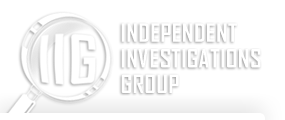


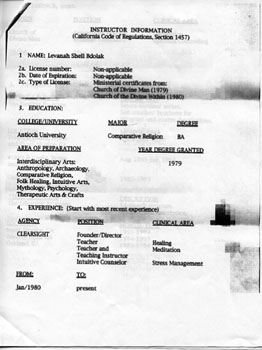
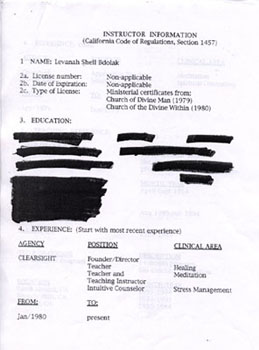 "
"